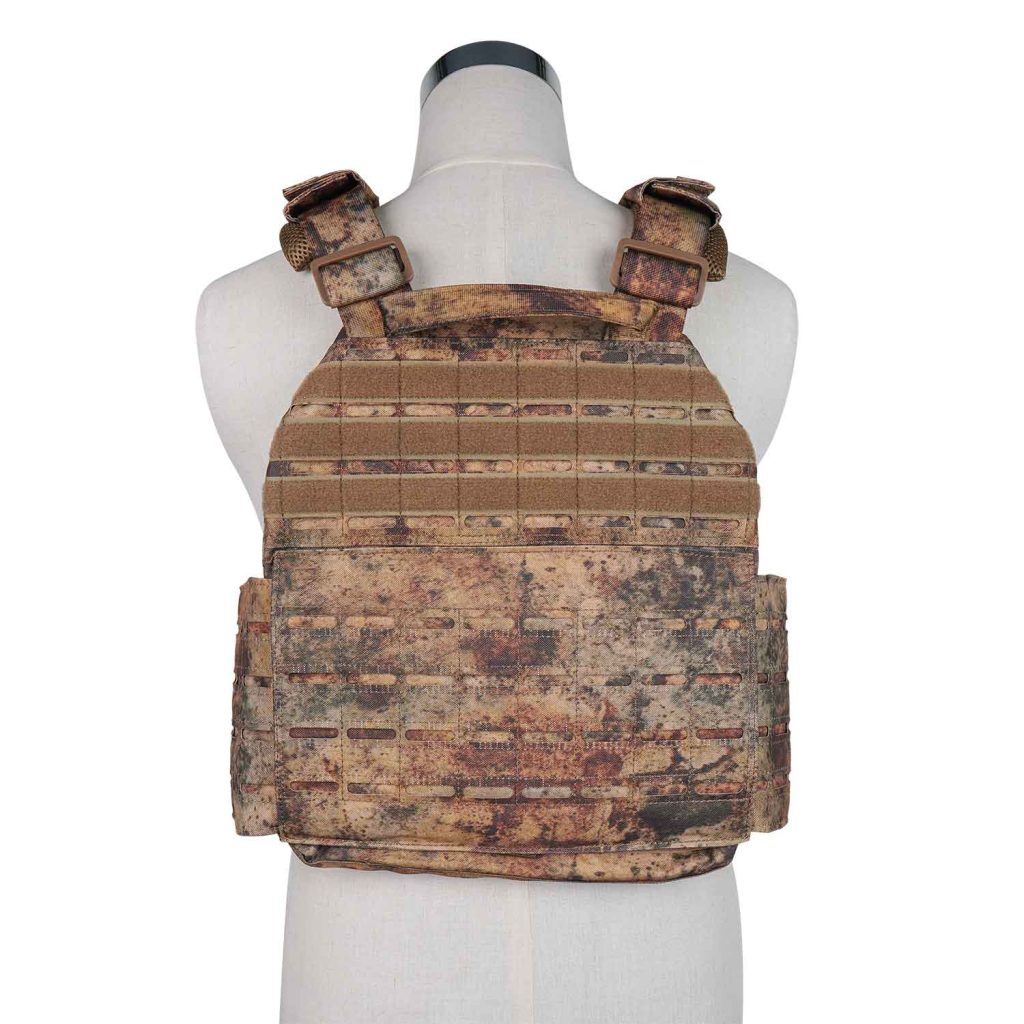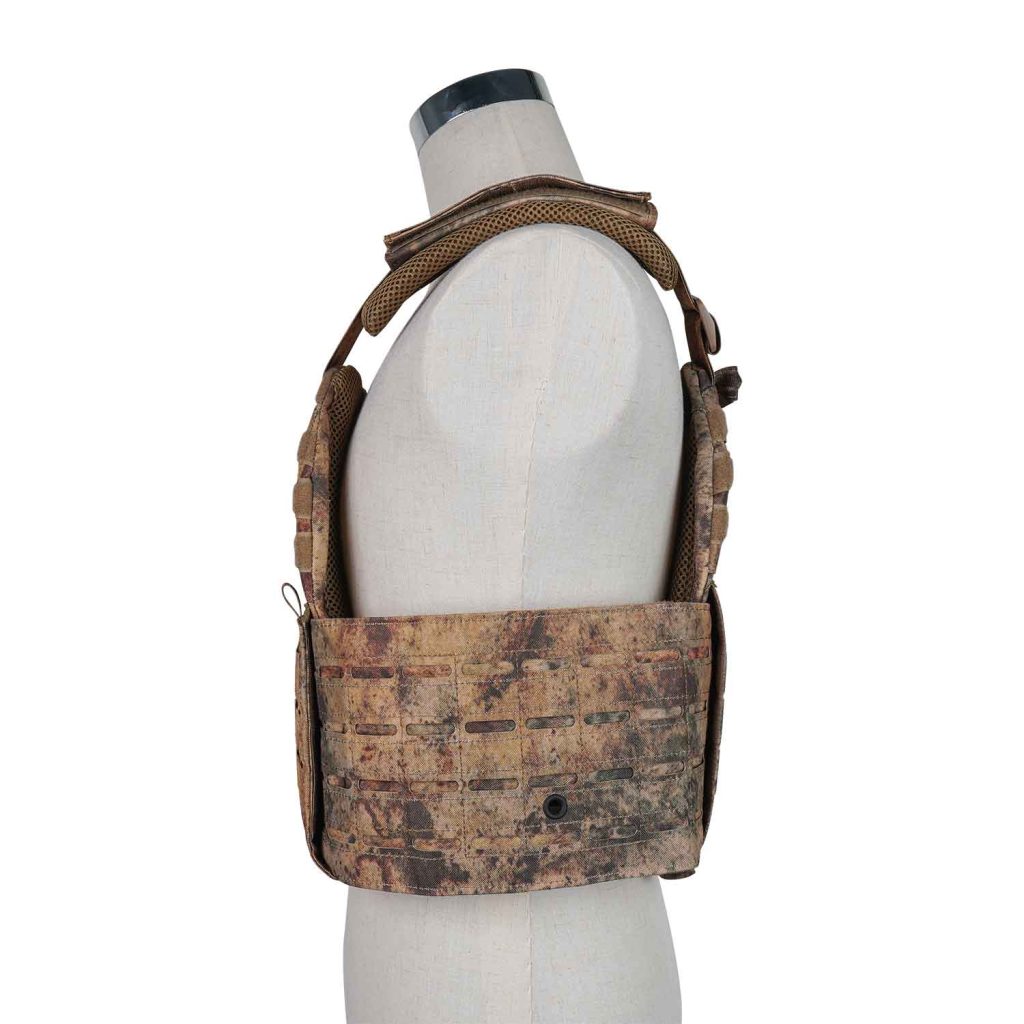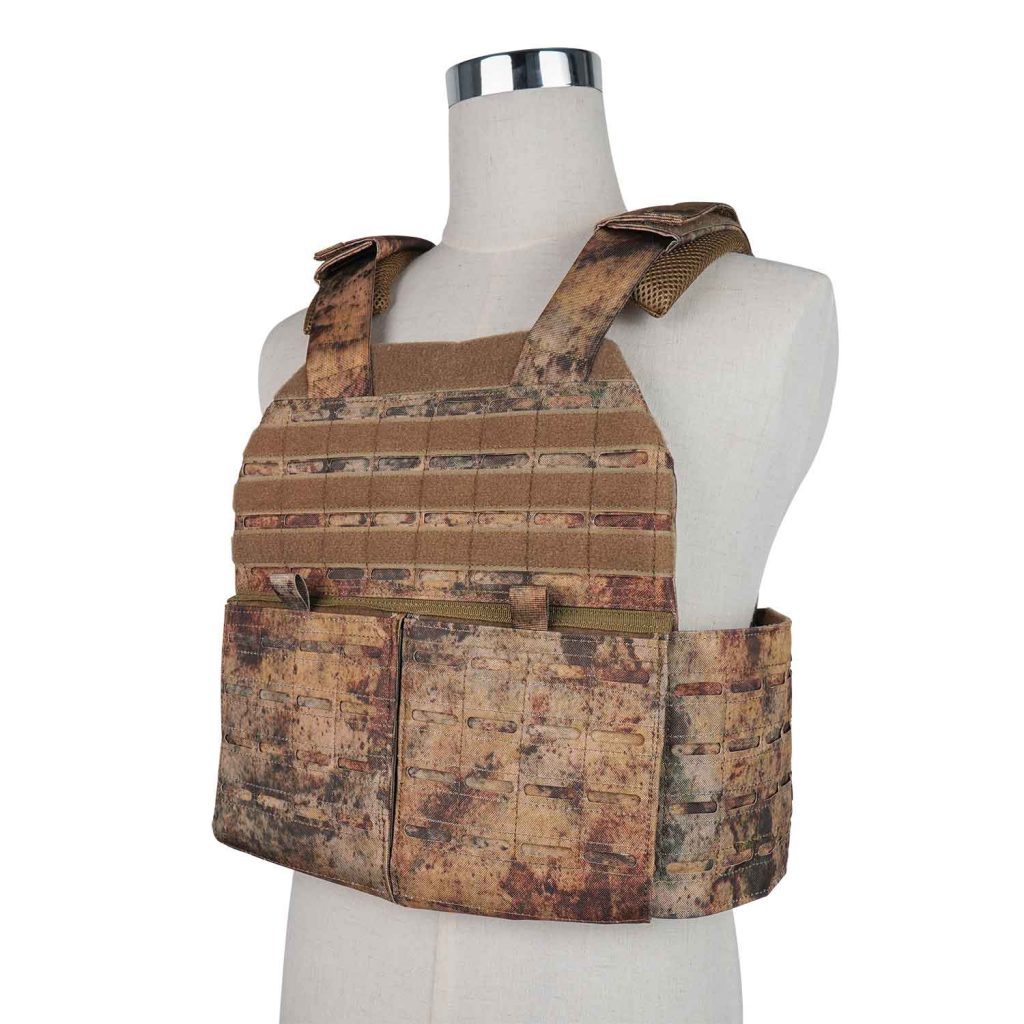Level IV hard armor is the pinnacle of ballistic protection, designed to shield wearers from high-velocity rifle rounds. Steel plates are highly regarded for durability and strength among the different materials used for Level IV plates. These plates are essential components of a comprehensive defense system, providing a barrier against some of the most formidable ballistic threats.
If you’re considering purchasing Level IV body armor, it’s crucial to understand its protective capabilities. This comprehensive guide explores the performance and limitations of Level IV body armor to help you make an informed decision. Let’s continue reading.
What Is Level IV Hard Armor?
Level IV hard armor represents the highest body armor protection currently available, certified by strict guidelines. It is specifically designed to defend against armor-piercing bullets. Level IV plates, including those made from steel, are integral to this armor level, offering the strength to stop such lethal projectiles in their tracks.
Incorporating advanced materials and technology, Level IV plates are engineered to disperse the energy of a bullet impact, thereby preventing penetration. Steel plates, favored for their resilience, play a crucial role in Level IV hard armor composition, contributing to its unmatched protective capabilities.

NIJ Standards for Level IV Body Armor
The National Institute of Justice (NIJ) sets the performance standards for body armor, with Level IV plates being rated to offer the highest level of ballistic protection. These plates, including those made of steel, must pass rigorous testing to stop a .30 caliber armor-piercing bullet, the benchmark for Level IV classification.
Steel plates used in Level IV body armor are subjected to specific tests to verify their durability and ballistic integrity. The NIJ requires that these plates not only stop the bullet but also maintain structural integrity after impact, ensuring the wearer is protected from both penetration and blunt force trauma.
Level IV Body Armor Plates
Level IV body armor plates are the core elements providing the highest ballistic protection in personal armor systems. Among the various materials used, steel plates are particularly favored for their ability to withstand multiple hits without compromising their protective qualities. The following are the different types of body armor plates:
Ceramic Plates
Ceramic plates in Level IV body armor are typically alumina oxide, boron carbide, or silicon carbide. These materials are selected for their impressive ballistic properties, which are capable of shattering incoming rounds and dispersing the energy from the impact. As a result, they significantly reduce the risk of penetration from high-velocity projectiles.
The effectiveness of ceramic plates lies in their ability to fracture the bullet upon impact, diminishing its lethal potential. Despite their hardness, these plates are engineered to be relatively lightweight, ensuring they do not overburden the wearer while offering robust protection against advanced ballistic threats.
Steel Plates
Steel plates are a fundamental Level IV body armor component, prized for their exceptional strength and reliability. These plates are crafted from high-grade steel, which undergoes a meticulous hardening process to enhance their resistance to ballistic threats. The result is a protective barrier that is not easily compromised, even under direct gunfire.
Due to their solid construction, steel plates offer confidence to individuals in high-risk situations. Steel’s resilience also means that these plates can endure multiple hits, a critical feature for those who may encounter sustained fire in the line of duty.
Polyethylene Plates (UHMWPE)
Polyethylene plates, especially those made from ultra-high molecular weight polyethylene (UHMWPE), present a modern solution for body armor that combines protection with comfort. These plates are known for being comfortable to wear, thanks to their lightweight and flexible nature, which does not compromise their protective capabilities.
While steel plates are recognized for their robust protection, polyethylene plates offer a significant advantage in weight and ease of movement. High-density polyethylene balances strength and lightness, making these plates ideal for extended wear in dynamic operational environments.

What Does Level 4 Body Armor Stop?
Level 4 body armor is designed to stop some of the most formidable threats on the battlefield, including armor-piercing projectiles. Steel plates within this classification can halter bullets fired from powerful rifles like the M1 Garand, known for their penetrating capabilities at long ranges. Level IV armor’s stopping power gives wearers protection against high-caliber threats.
As one of the highest levels of protection available, Level IV body armor is designed to stop some of the most powerful rounds from rifles and other high-powered firearms.
At a distance of 15 meters or less, Level IV body armor stopping power is enough to stop the following types of bullets based on NIJ testing:
- 7.62x63mm M2 AP (.30-06)
Premier Body Armor’s Level IV plates have been additionally tested to withstand the following:
- 7.62×x39 123gr PS Ball (MSC)
- 7.62×x51 147gr FMJ (M80) – up to 2850 ft/s
- 5.56×45 55gr (M193) – up to 3150 ft/s
- 5.56x45mm 62-grain steel core (M855)
- 5.56x45mm M855 A1
What Can Level IV Body Armor Not Protect Against?
Level IV body armor provides a strong defense against many high-powered rifle rounds and armor-piercing projectiles but has limitations against specific threats such as:
- High-velocity armor-piercing rounds are designed to defeat Level IV armor.
- Exotic or experimental ammunition engineered to bypass traditional ballistic defenses.
- Large-caliber rifle rounds like .50 BMG with extreme penetrating power.
Rifle rounds fired from very close range or unusual angles compromising armor effectiveness.
However, it does not protect against:
- Edged weapons like knives or swords.
- Blunt force trauma from impacts of strikes.
- Explosive devices such as grenades or IEDs cause damage beyond ballistic penetration.
Understanding these limitations is crucial for users to make informed decisions about personal protection in high-risk environments.
Difference Between Level III and Level IV Body Armor
The distinction between Level III and Level IV body armor lies in their stopping power and the types of threats they are designed to counter. Level III armor is intended to stop rifle rounds up to 7.62mm, whereas Level IV body armor plates are tested against .30 caliber armor-piercing bullets. Steel plates in Level IV armor offer enhanced protection, meeting the rigorous NIJ 0101.06 standard for Level 4, ensuring they can withstand hits from high-velocity rounds that would penetrate Level III armor.
Level IV body armor provides the highest ballistic protection certification by the NIJ, making it suitable for military personnel and law enforcement officers who may encounter armor-piercing rounds. Level IV steel plates’ ability to offer this premier protection is a result of their advanced design and the comprehensive testing they undergo, which includes assessing their multi-hit capability and ensuring they maintain ballistic integrity after impact.

Pros and Cons of Level IV Body Armor
Level IV body armor offers unmatched ballistic protection, with steel plates being a cornerstone of its defensive capability. These plates provide the highest protection against armor-piercing bullets, making them a critical asset in life-threatening situations. However, there are some limitations to this body armor, too. The following are the pros and cons of level IV body armor:
Pros
- Highest protection against ballistic threats
- Ideal for law enforcement, military, emergencies
- Affordable range ($100-$250)
- Effectively stops common rifle threats
- Videos demonstrate armor effectiveness
Cons
- Heavy and less comfortable
- Costly to reduce weight
Should You Invest in Level IV Body Armor?
Investing in Level IV body armor, particularly those with steel plates, depends on the specific threats one expects to face. Such armor is designed for the most severe ballistic threats, and its use is generally recommended for individuals in high-risk roles where armor-piercing rounds are a realistic concern.
The decision to invest in steel plates within Level IV body armor should be based on a careful assessment of risk factors and operational needs. While the protection offered is unparalleled, it comes with weight and comfort considerations that may affect field performance. Level IV body armor would be a good investment for the following people:
Military Personnel
Military personnel often operate in environments exposed to high-caliber threats. For them, Level IV body armor can be a critical component of their gear, potentially making the difference between life and death. Stopping armor-piercing rounds provides soldiers the protection to carry out their missions effectively.
Law Enforcement Officers
Law Enforcement officers face a variety of threats in the line of duty, from handgun rounds to high-powered rifle fire. Level IV body armor, equipped with steel plates, offers these officers the highest level of protection, especially when there is a potential for encountering armor-piercing ammunition.
Security Contractors
Security contractors working in volatile regions or high-threat environments may find Level IV body armor essential to their protective equipment. The steel plates in this armor provide a reliable defense against ballistic threats that could be encountered during their duties.
High-Risk Journalists
Journalists working in conflict zones or covering sensitive stories often face threats to their safety. Level IV body armor provides these individuals with the highest level of protection currently available within the scope of personal armor, capable of stopping armor-piercing rifle rounds. By wearing this type of vest, journalists can focus on their reporting without the constant fear of being fatally wounded should they find themselves in a crossfire or targeted attack.
Private Citizens in Dangerous Areas
For private citizens living in areas with high rates of violent crime or instability, Level IV body armor offers a protective measure that could be critical in life-threatening situations. Though not a daily wear for most, it serves as an essential safety precaution for those who might be exposed to sporadic outbreaks of violence or find themselves in high-risk scenarios due to their location or occupation.
Firearms Enthusiasts
Firearms enthusiasts, such as sport shooters and hunters, who engage in activities that involve powerful rifles may consider Level IV body armor for personal protection. In environments where there is a risk of ricochets or accidental discharges, wearing this caliber of body armor can provide an extra layer of safety, potentially preventing serious injury or death from high-velocity rounds.
Wrap-Up!
Understanding the capabilities and limitations of body armor is crucial for those in high-risk environments. Level IV body armor offers the highest level of protection within the NIJ standard, making it a critical asset for military, law enforcement, and civilians in dangerous areas. Its ability to stop armor-piercing rounds provides a significant advantage over lower levels of protection, such as level ii armor, which is designed to stop only pistol caliber threats.
Choosing the appropriate body armor level requires assessing the threats one is likely to encounter. While level IV body armor provides robust protection, it is also heavier and more expensive. Therefore, individuals should consider their unique needs and circumstances carefully before investing in high-grade protective gear.
